Search alphabetically (by title):
- ALL
- #
- 0
- 1
- 2
- 3
- 4
- 5
- 6
- 7
- 8
- 9
- A
- B
- C
- D
- E
- F
- G
- H
- I
- J
- K
- L
- M
- N
- O
- P
- Q
- R
- S
- T
- U
- V
- W
- X
- Y
- Z
Titles
David Odell-Scott
|
Filed under: History, Symposia on Democracy
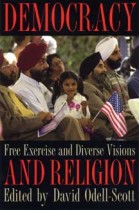
Compiled from papers delivered at the third annual Kent State University Symposium on Democracy held in spring 2002, Democracy and Religion: Free Exercise and Diverse Visions explores the interrelations of politics and religion. The work is divided into four main sections: the constitutional debate regarding the establishment and free exercise of religion clause, the themes of violence and nonviolence as they relate to religion, the free exercise of religion and the rise of fundamentalism, and the challenges to the free exercise of diverse religious practices in a democratic society.
Filed under: History, Symposia on Democracy
Kevin Adams and Leonne M. Hudson
|
Filed under: African American Studies, American History, Civil War Era, Discover Black History, Symposia on Democracy, Understanding Civil War History
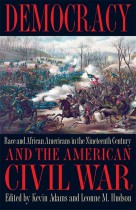
In 1865, after four tumultuous years of fighting, Americans welcomed the opportunity to return to a life of normalcy. President Abraham Lincoln issued his emancipation decree in January 1863 and had set the stage for what he hoped would be a smooth transition from war to peace with the announcement of his reconstruction program in December 1863 and with his call of “malice toward none and charity for all” in his Second Inaugural Address in March 1865. Lincoln’s dream of completing the process of reconstructing the nation was cut short just one month later by the hand of an assassin.
Filed under: African American Studies, American History, Civil War Era, Discover Black History, Symposia on Democracy, Understanding Civil War History
Carole A. Barbato and Laura L. Davis
|
Filed under: History, May 4 Resources, Symposia on Democracy
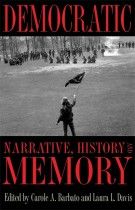
The essays in this volume explore the complex relationships among events, memory, and portrayal of those events and the deepest questions of human experience, all viewed through a range of disciplinary lenses but grouped into three sections, each with its own focus and meaning.
Filed under: History, May 4 Resources, Symposia on Democracy
Steven W. Hook
|
Filed under: Political Science & Politics, Symposia on Democracy

Historical patterns suggest that democratic governments, which often fight wars against authoritarian regimes, maintain peaceful relationships with other governments that uphold political freedoms and empower their civil societies—a concept known as “democratic peace.” Democratic Peace in Theory and Practice is a timely collection of essays by leading scholars that examines how democracies maintain relationships and how democracies are spread throughout the world.
Filed under: Political Science & Politics, Symposia on Democracy
John Lofton and Peter Charles Hoffer
|
Filed under: American Abolitionism and Antislavery, Discover Black History, History

In 1822, Denmark Vesey was found guilty of plotting an insurrection—what would have been the biggest slave uprising in U.S. history. In Denmark Vesey’s Revolt, John Lofton draws upon primary sources to examine the trial and provide, as Peter Hoffer says in his new introduction, “one of the most sensible and measured” accounts of the subject. This classic book was originally published in 1964 as Insurrection in South Carolina: The Turbulent World of Denmark Vesey, and then reissued by the Kent State University Press in 1983 as Denmark Vesey’s Revolt: The Slave Plot That Lit a Fuse to Fort Sumter.
Filed under: American Abolitionism and Antislavery, Discover Black History, History
Allan Pinkerton
|
Filed under: Black Squirrel Books, Classic Detective Stories, Criminal Investigation
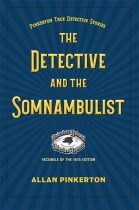
Pinkerton travels to Atkinson, Mississippi, to investigate the murder of bank teller George Gordon and the theft of more than $130,000 in the City Bank of Atkinson. Atkinson appears at first to be no more than a quiet town of shopkeepers, laborers, and businessmen. But dark secrets lurk beneath the town’s Southern facade, and Pinkerton wastes no time in discovering them. Traveling under the guise of a cotton speculator, Pinkerton makes inquiries into the crime without drawing suspicion.
Tags: allan pinkerton, detective, pinkerton, True Crime Filed under: Black Squirrel Books, Classic Detective Stories, Criminal Investigation
Alex Fabrizio
|
Filed under: Poetry, Wick Chapbook

“These nineteen supple poems have both a strong sense of unity and a wide spectrum of forms, themes, and moods. Virtuosic writing combines with jagged feeling, and the end result is engaging, dramatic, and unpredictable.”—Henri Cole
“These poems have a strong voice and a bold reach: they turn outwards, finding big subjects and solid narratives. They seek to make a world: and then they persuade the reader to live in it.”—Eavan Boland
Filed under: Poetry, Wick Chapbook
Frederick Lieb
|
Filed under: Sports, Writing Sports
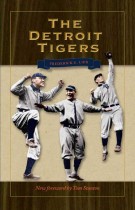
Fred Lieb’s team history of the Detroit Tigers was originally published in1946 as part of the celebrated series of major league team histories published by G. P. Putnam. With their colorful prose and delightful narratives, the Putnam books have been described as the Cadillac of team histories and have become prized collectibles for baseball readers and historians.
Filed under: Sports, Writing Sports
Margaret C DePalma
|
Filed under: History
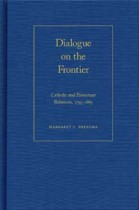
Dialogue on the Frontier is a remarkable departure from previous scholarship, which emphasized the negative aspects of the relationship between Protestants and Catholics in the early American republic. Author Margaret C. DePalma argues that Catholic-Protestant relations took on a different tone and character in the late eighteenth and early nineteenth centuries. She focuses on the western frontier territory and explores the positive interaction of the two religions and the internal dynamics of Catholicism.
Filed under: History
Jack Gieck
|
Filed under: History, Regional Interest
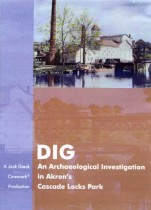
A busy and densely packed valley in its heyday, this area once housed an iron foundry, a furniture factory, a distillery, several grist mills, and two rubber plants—all within a half-mile stretch of the canal. Still remaining are several watered locks and wasteway structures, evidence of the Cascade Race and tunnel two canal-era buildings; Ace Rubber/Garro Tread (one of Akron’s few remaining rubber plants); and two historic railroads. The entire Cascade Locks Historic District was placed on the National Register of Historic Places by the Department of the Interior in 1992.
Filed under: History, Regional Interest
Subject/Title category archive











